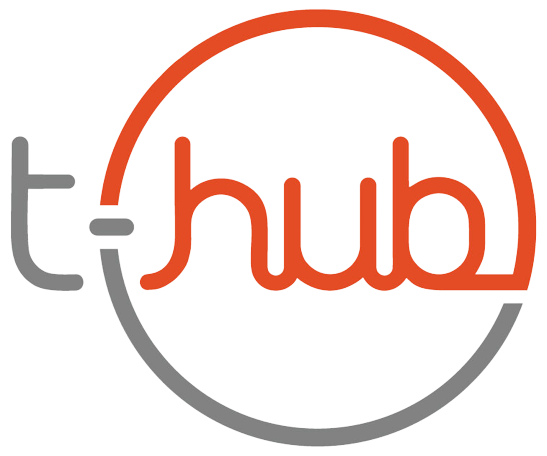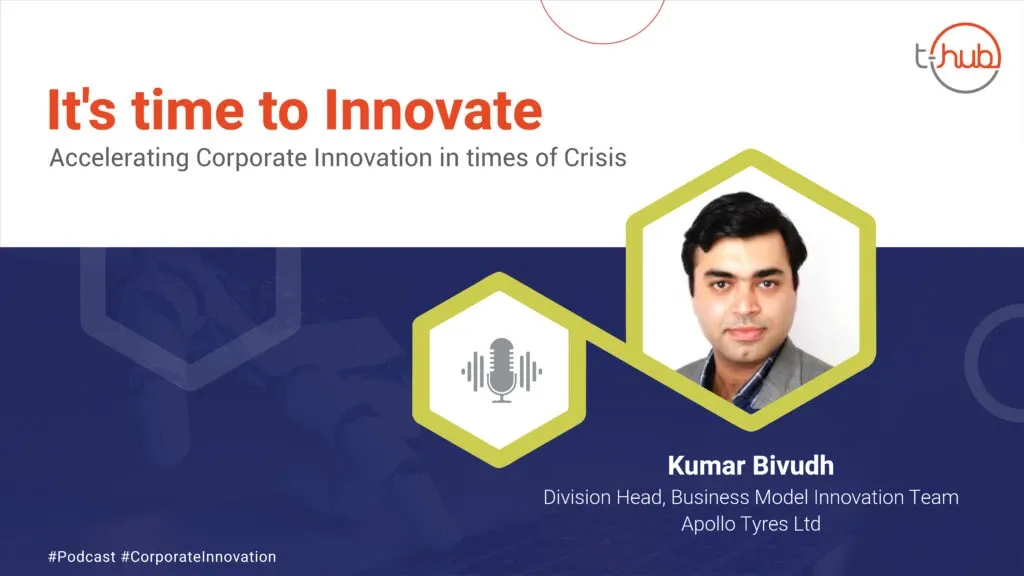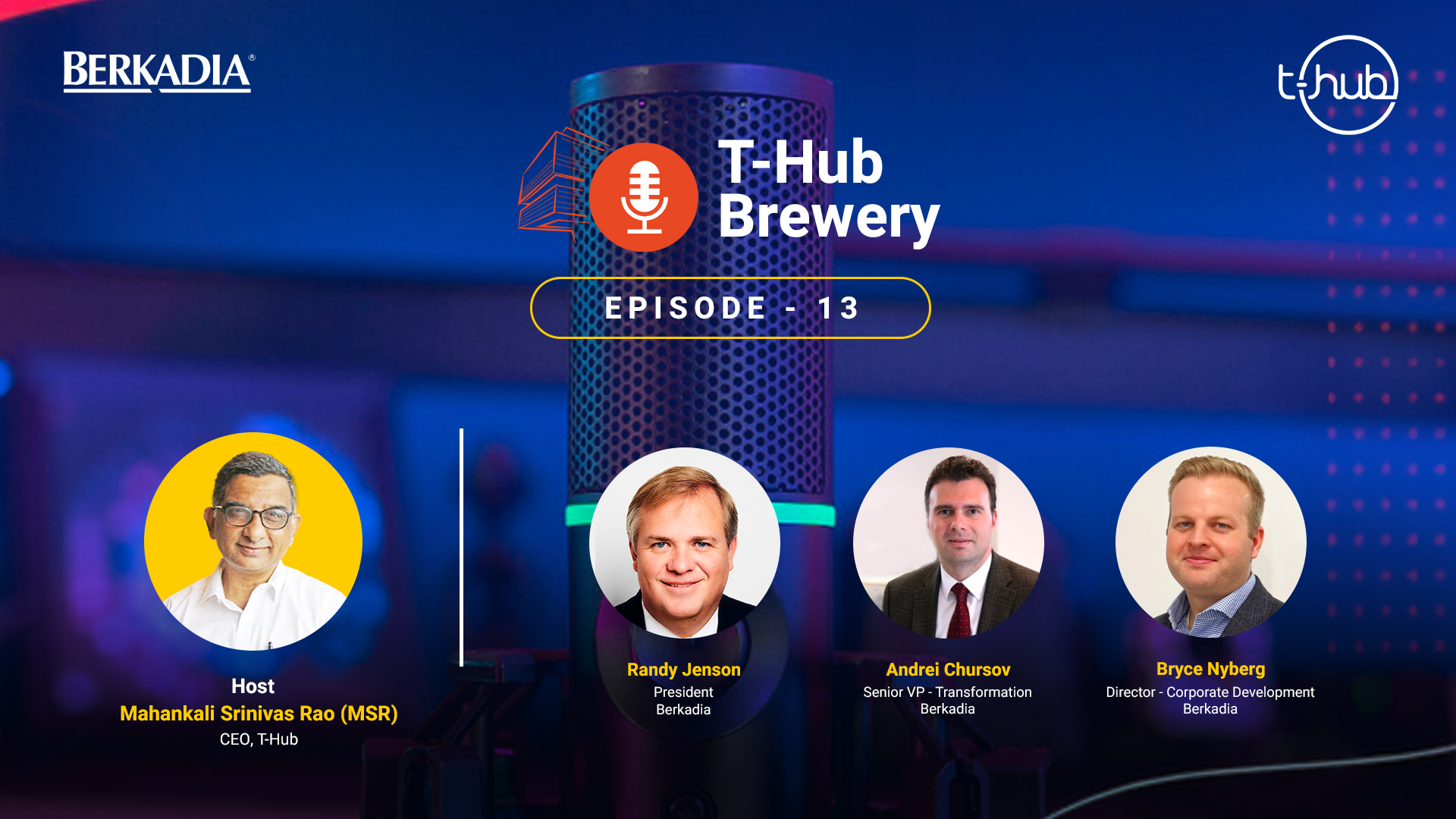Hi in this podcast by T-Hub, I will share some of my thoughts on Innovation in times of crisis. My name is Kumar Bivudh and I’m leading the business model, innovation team and strategic projects at Apollo tyres.
In my career, I have worked in both services and manufacturing sectors, and while I see innovation as a continuous journey for organizations, I strongly believe that innovation becomes extremely critical during a crisis.
Now, this topic can be discussed via multiple perspectives and in fact, can justifiably take a lot of time.
Instead, what I intend to do in the next couple of minutes is focus on three questions through which I hope I will trigger a series of thoughts in you and will also help you with a simple framework that I use to thrive via innovation during the current crisis and also coming out of it.
Now, these three questions are quite standard, the why,what and how. So jumping on to the first question:
Why do we need innovation in a crisis?
Now, crisis has two sides to it, there is a danger aspect and also there are a series of changes which happen and they last. In a recent Mckinsey survey, 90% of business managers suggested that the current pandemic crisis would lead to multiple changes and thereby opportunities. Now, this is interesting, in the past, companies that have innovated and captured these opportunities. Which have come in the form of changing trends, have done exceedingly better than their peers on all possible financial metrics. Now, is that the reason or is that the answer to the why? Well, this is more of an outcome. The core reason why innovation is necessary is quite simple, it is because your customer changes. Your customers’ behaviors changed drastically during a crisis. Look at the current crisis, for instance. All age groups are now hooked onto digital platforms, even the elderly. Whether or not they were active digitally earlier. And that trend is bound to disrupt all the industries in one way or the other. There’s so many examples for it, be it education, corporate meetings, shopping, channels, media consumption, the list goes on. And so, “What” is relevant to my first question on “Why” is simply customer. This in fact, is the first and foremost important pillar of the framework I propose.
Now, coming to the second question post, the why – the “What”.
What organizations need to focus on to innovate in times of crisis?
Look at the current pandemic crisis again, there are disruptions and therefore opportunities across the value chain. At customer level, business partner level, employee level, manufacturing level and overall supply chain. What is bringing such opportunities to reality? Or will bring such opportunities to reality. You guessed it right, digital capabilities. And while New Age capabilities in the form of digital data are important, what actually is needed is the business model focus. This business model perspective can only get the organization to move in the right way and renew the full value chain, which is essential for bringing solutions to these new customer problems in a sustainable manner. A very good example. Is the subscription offering being brought in by automotive companies. Many players in the car manufacturing space are introducing subscription or paper use offering, during the current crisis. Now, an effective and sustainable value offering of subscription would not just end at commercial level, but would require innovation in the channel, supply chain, working capital, adjacent capabilities and so on. All of this brought together, will not just bring a new offering in form of subscription to the market in a meaningful way, but also will help the organization sustain it over a period of time. And so the answer to my second question on “what” one needs to focus on is the business model.
Now post the why and the what, the next logical question is “How”.
How do we innovate to convert these changes during crises into opportunities?
Getting customer and business model right is half the battle and can definitely help you with a robust strategy or an approach, however post that, getting execution right is the most critical piece for that strategy. Execution can spring up massive risks as well. Think about it. Considering the time, cost, effort required, and especially with the dynamic and constrained environment in a crisis, one could falter at many points. Specially because innovation also requires new age capabilities and new operating models at times. In such a journey, what increases your probability of success is agility. That can take multiple shapes and to an extent, quick course correction is one of them. Now, what I’m going to offer you is one approach that will increase your ability to be flexible and agile at the same time. Again, let’s look at the current pandemic. In the initial days of lockdown, we saw some great examples of last mile delivery companies working together to ensure that customers were not missing out on essential services. And that collaborative approach is what I’m stressing on as an answer to my third question. Both startups and large organizations can collaborate within the ecosystem to minimize risks, increase speed to market and in fact help borrow capabilities that would otherwise take a long time to come out or take a long time to create. This ensures solving customer problems at the most critical times of need and not later. While collaboration with external stakeholders is something that is visible and we have seen in the current pandemic as well, I would also add another aspect of collaboration. In large companies where at times there are creations of silos of excellence in different functions, usually for the right reasons, in pursuit of efficiencies in scale. However, in a crisis, collaboration within the company through cross-functional teams can give a huge advantage both during and coming out of a crisis. In fact, if you think about it. We started with the customer, new problem statements coming from the customer end because of the change brought on by crisis, and then having a business model perspective for solving these new problems of the customer. For that business model perspective, one should intuitively require cross-functional collaboration within organizations and if you take it further to collaboration with external stakeholders, you get the combination right and so the answer of my third question on “How” is through collaboration. Now combining the answers to these three questions on Why, What and How brings me to the simple frame work I propose, of customer at the center, business model at collaboration. I also qualify CBC as an abbreviation, and in my opinion CBC could be leveraged to any organization irrespective of size sector and can enable them to innovate and capture changing trends as opportunities during the crisis.
These are some of my thoughts on this very relevant topic and I am sure that there is lot not covered in this podcast. I would be keen to continue the conversation on the podcast you can connect with me on linked or via T-Hub’s platforms. Thank you T-Hub for arranging this podcast stay safe, stay healthy and hope you thrive and not just survive coming out of this crisis with innovation and CBC as an enabler.






